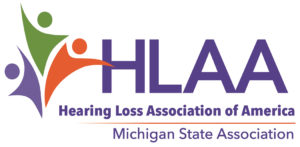Is a Personal Sound Amplification Product (PSAP) Right for You?
Tony Ferack, Hearing Technology Resource Specialist
To answer this question, we have to know what a PSAP is. It is basically a wearable device that amplifies sound. A person with hearing loss might say, “That sounds like a hearing aid”. Hearing aids and PSAP’s have the same four basic components:
- A Microphone, to convert acoustical sound energy into electrical energy
- An Amplifier, to increase the electrical signal strength
- A Speaker, to convert the electrical signal back into acoustical energy
- A Battery, or source of power for the device
The difference is that hearing aids are classified as medical devices whereas PSAP’s are classified as electronic devices.
Unlike a hearing aid, a PSAP is not intended to compensate for impaired hearing and must be labeled accordingly. Probably the biggest concern for people using PSAP’s is the level of the sound entering the ear. Exposure to loud sounds can damage the ear. Hearing aids are programmed to limit the maximum level of sound. Another difference between hearing aids and most PSAP’s is that hearing aids amplify the frequency of sound, based on a person’s loss. In other words, the hearing aids of a person with high frequency hearing loss will have high frequencies amplified more than the low frequencies. Most PSAP’s will amplify all frequencies by the same amount. Still another difference is that most, if not all, hearing aids today have two or more microphones strategically placed to help reduce background noise. Most PSAP’s have only one microphone so the ability to filter background noise is limited. An internet search of PSAP’s will show the cost in the range of $10 to $600. The cost for a hearing aid will vary from about $1000 – $2700 (this cost may or may not include professional services). The technology used in PSAP’s is improving.
One PSAP product that deserves attention is the Soundhawk, (www.soundhawk.com). The cost is $299 but it requires the use of a smartphone for tuning and volume settings. Newer hearing aids also have the ability to be tuned using a smartphone.
So, is a PSAP right for you? Before buying a PSAP, see a hearing health specialist to rule out correctable hearing problems. Also, make sure the PSAP can be returned. Trying out the product is the only way to know if it will be sufficient for your hearing loss. Do not buy based on someone else’s recommendation.
Reference: Ross, M. (Modified 2013, July 1). Personal Sound Amplification Products (PSAPs) Versus Hearing Aids. Retrieved from http://www.Hearingresearch.org.



